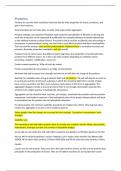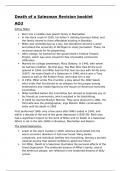Samenvatting
Food Ingredient Functionality Summary
- Vak
- Instelling
The following documents present my summary of the course Food Ingredient Functionality and it is based on the book provided by the university but also concepts I found difficult to understand explained from other sources. These documents contain concepts explained in an easy-to-grasp way according ...
[Meer zien]





